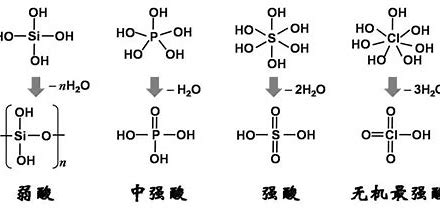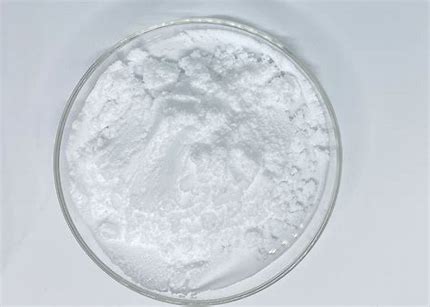Regulations for phosgene use in the EU/US
Phosgene gas is a highly reactive and potentially hazardous chemical. It’s used in many industrial processes. But, its use and handling are strictly regulated in the European Union (EU) and the United States (US).
This section looks at the rules for using phosgene. It shows how important it is to protect public health, worker safety, and the environment.
Phosgene is used in making plastics, medicines, and farm chemicals. Because it’s risky, the EU and US have strict guidelines. These rules cover how to store, move, and use phosgene safely. They also include emergency plans.
These regulations are key to keeping everyone safe. They make sure phosgene is handled carefully and responsibly.
- highly regulated chemical compound in the EU and US due to its hazardous properties.
- Regulatory frameworks in both regions emphasize the importance of safety protocols and responsible handling of phosgene.
- Compliance with storage, transportation, and workplace safety standards is crucial for industries utilizing phosgene.
- Emergency response procedures are a key component of phosgene regulations to mitigate the risks associated with its use.
- The regulatory landscape for phosgene reflects the ongoing efforts to balance industrial needs with environmental and public health considerations.
Common Industrial Uses
used to make many chemicals, like isocyanates, polycarbonates, and pesticides. It’s also used in making medicines, dyes, and plastics. This makes it essential in many industries.
Chemical Properties and Hazard Classification
that can quickly turn into corrosive hydrochloric acid when it meets moisture. Its dangerous nature, which can harm the lungs severely or even be fatal, has led to strict rules and safety measures for its use and handling.
Historical Context in Chemical Manufacturing
Phosgene has been used in chemical manufacturing since the early 20th century. It was first used as a chemical warfare agent in World War I. Since then, its uses have grown, and it’s now a key part in making many modern chemical products.
| Phosgene Applications | Chemical Properties | Hazard Classification | Industrial Uses |
| – Synthesis of isocyanates – Production of polycarbonates – Manufacture of pesticides | – Colorless, highly reactive gas – Forms corrosive hydrochloric acid when exposed to moisture | – Highly toxic – Potential to cause severe respiratory damage and death | – Pharmaceuticals – Dyes – Plastics |
EU Regulatory Framework for Phosgene Gas
The European Union (EU) has set up a detailed rulebook for phosgene gas. This includes two main laws: the Registration, Evaluation, Authorisation and Restriction of Chemicals (REACH) and the Classification, Labelling and Packaging (CLP) Regulation.
REACH is run by the European Chemicals Agency (ECHA). It makes sure all chemicals, are registered and checked if they’re made or brought into the EU in big amounts. Companies must share info on phosgene’s properties, uses, and risks to keep it safe.
The CLP Regulation adds to the EU’s safety rules. It sets clear rules for classifying, labeling, and packaging dangerous substances like phosgene. This helps everyone know the risks and take the right steps to stay safe.
The European Chemicals Agency (ECHA) is key in making sure these rules are followed. They offer advice and help to industries and people on managing phosgene and other dangerous chemicals. ECHA’s work helps keep the EU’s chemical industry safe, protecting people and the environment.
US Federal Guidelines and OSHA Requirements
In the United States, the Occupational Safety and Health Administration (OSHA) is key in protecting workers who handle phosgene gas. OSHA has strict standards and protocols to reduce risks from this dangerous chemical. This ensures safety in the workplace is always a priority.
Workplace Safety Standards and Protocols
OSHA has strict rules for handling phosgene gas. Employers must give workers the right personal protective equipment (PPE). This includes masks and special clothes. Workers also need training on how to use and care for this equipment.
| OSHA Standard | Requirement |
| 29 CFR 1910.1030 | Bloodborne Pathogens |
| 29 CFR 1910.1200 | Hazard Communication |
| 29 CFR 1910.1450 | Occupational Exposure to Hazardous Chemicals in Laboratories |
“Keeping a safe and healthy work place is crucial when dealing with dangerous chemicals. OSHA’s rules offer a strong way to protect workers and manage this substance responsibly.”
By following OSHA’s rules closely, employers in the United States can keep their workers safe. This helps reduce the dangers of using phosgene gas in work settings.
Transportation and Storage Regulations Across Borders
In the US, the Department of Transportation (DOT) has strict rules. These rules cover packaging, labeling, and paperwork for phosgene shipments. Not following these regulations can lead to big fines.
In Europe, the European Agreement concerning the International Carriage of Dangerous Goods by Road (ADR) has its own set of requirements. These international regulations include driver training and vehicle standards. They ensure phosgene is moved safely across the continent.
Businesses must follow strict rules for keeping it safe. This includes proper labeling and segregation, both in transit and at storage facilities.
| Regulation | Jurisdiction | Key Requirements |
| DOT Guidelines | United States | Packaging and labeling standardsDocumentation and manifestsHazardous materials training for personnel |
| ADR Requirements | Europe | Vehicle specifications and equipmentDriver training and certificationContainment and segregation protocols |
Dealing with chemical transportation rules across borders is complex. It needs careful planning and knowledge of guidelines. Companies must follow both DOT and ADR rules to keep their operations safe and legal.
Industry Best Practices for Phosgene Handling and Use
Handling and using phosgene gas safely is crucial for industries that use it. To reduce risks, top companies follow strict safety rules. These include detailed risk assessments, thorough training for employees, and strict PPE rules.
First, companies do a deep risk assessment. They look at possible dangers, how likely accidents are, and put in place strong safety steps. This helps them stop phosgene accidents before they happen.
Training employees well is also key. Workers learn about the chemical, how to handle it, emergency steps, and the need to follow safety rules. This training keeps them ready for any phosgene issues.
Wearing the right PPE is a must for everyone working with phosgene. Companies make sure workers wear special suits, masks, and other safety gear. They also check and replace this gear often to keep everyone safe.
These practices are a guide for others in the industry. They help keep phosgene use safe and sustainable.
| Best Practices | Description |
| Risk Assessment | Comprehensive analysis of potential hazards and implementation of control measures to minimize risks. |
| Employee Training | Extensive education on chemical properties, handling techniques, emergency response, and safety protocols. |
| PPE Requirements | Mandatory use of specialized suits, respirators, and other safety gear to protect workers from exposure. |
Future Trends in Phosgene Regulation and Alternatives
The chemical industry is moving towards safer options. This shift is driven by the need for green chemistry and sustainable manufacturing. Researchers are working hard to find alternatives to phosgene gas that are safer and just as effective.
In the European Union, the REACH regulation is pushing for safer chemicals. The United States is also focusing on safety and environmental protection. Agencies like OSHA and EPA are leading the charge to reduce risks from chemicals like phosgene.
The future of phosgene regulation will likely involve stricter rules and better safety measures. The industry is moving towards green chemistry, which means more eco-friendly solutions. This change will open up new chances for chemical companies to meet the needs of their customers and the law.
What are the common industrial uses of phosgene gas?
This includes isocyanates, pesticides, dyes, and medicines. It’s also key in making polycarbonates and polyurethanes.
What is the European Union’s regulatory framework for phosgene gas?
The EU has strict rules for phosgene gas. These rules are part of the REACH and CLP Regulations. The European Chemicals Agency (ECHA) makes sure everyone follows these rules.
What are the OSHA requirements for phosgene gas handling in the United States?
OSHA in the US has set safety standards for phosgene gas. These standards cover how to store, handle, and respond to emergencies. They aim to keep workers safe.








